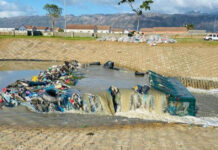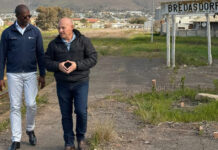SOUTH African wine grape and wine producers continue to adapt to economic pressures and the effects of climate change to ensure their own sustainability, and that of the wine industry.
These and other insights were shared at the Winetech Vinpro Regional Information Days from 7 to 14 September 2021. Close to 200 people attended the sessions in Paarl, Stellenbosch, Worcester, Robertson and Olifants River.
Focus on the positive
Says Christo Conradie of Vinpro, now is the time to focus on the positive and build on it. “Our current export figures are looking good – even better than in 2019 – in terms of volume, but especially value growth. South Africa’s cultivar wines are doing particularly well in overseas markets, including Chardonnay, Sauvignon, Shiraz, Cabernet Sauvignon and Merlot.”
There is also a revival in the planting of new vineyards, with about 2 000 ha that are estimated to be established by the end of 2021. “These vines are being planted on a large scale by producers across the wine grape growing regions, with different business models – from producer to private cellars. More importantly, it’s the right cultivars that are being planted on the most appropriate sites for the specific wine purpose. We can definitely draw inspiration from this,” Christo says.
“A total of 72% of the 2021 wine grape crop, and 77% of our 92 000 ha under vineyards are Wieta certified. We can proudly build on this and spread the message to an international audience.”
Buffer yourself against climate change
Climate change is a reality. According to Dr Etienne Neethling of Vintage Master and Grappe-Esa-Inra in France, an increasing number of wine grape producers from around the globe are observing the effects of climate change on their farms, and making adjustments in their vineyard practices.
According to a survey among 3 625 wine grape producers in 18 countries, 84% of the respondents are observing signs of climate change, including an increase in average winter and summer temperatures and the occurrence of unusual droughts, hail and frost in certain regions. Wine grape vineyard’ phenological stages are kicking off earlier than normal and some countries have recorded smaller yields which they attribute to climate change.
Best irrigation practices
“To measure is to know,” says Francois Viljoen of Vinpro’s Gen-Z Vineyard Project. Various aids are available to measure the water status in the soil and plant, including evapotranspiration measurements and the use of soil samples, soil moisture meters, tensiometers, pressure bombs, stem shrinkage measurements and remote sensing by means of infrared thermography. “There are pro’s and cons to the respective tools, but ultimately they must form part of an integrated approach,” Philip says.
Control diseases and pests wisely
By applying disease and pest control judiciously, wine grape producers can save costs, reduce resistance to these chemicals and limit their chemical footprint. According to Marius Ras of Ras Consulting, a spray programme must adjust its droplet size, solution volume and the air momentum of the spraying equipment according to the leaf density and target depth. “The ultimate goal is for the fungicide or pesticide to cling to the vine surface. If the drops are too large, it will bounce off the surface,” Marius says. He advises producers to use less than 1 000 litres of solution per hectare for disease and pest control, to ensure optimal atomisation, transfer and deposition.















